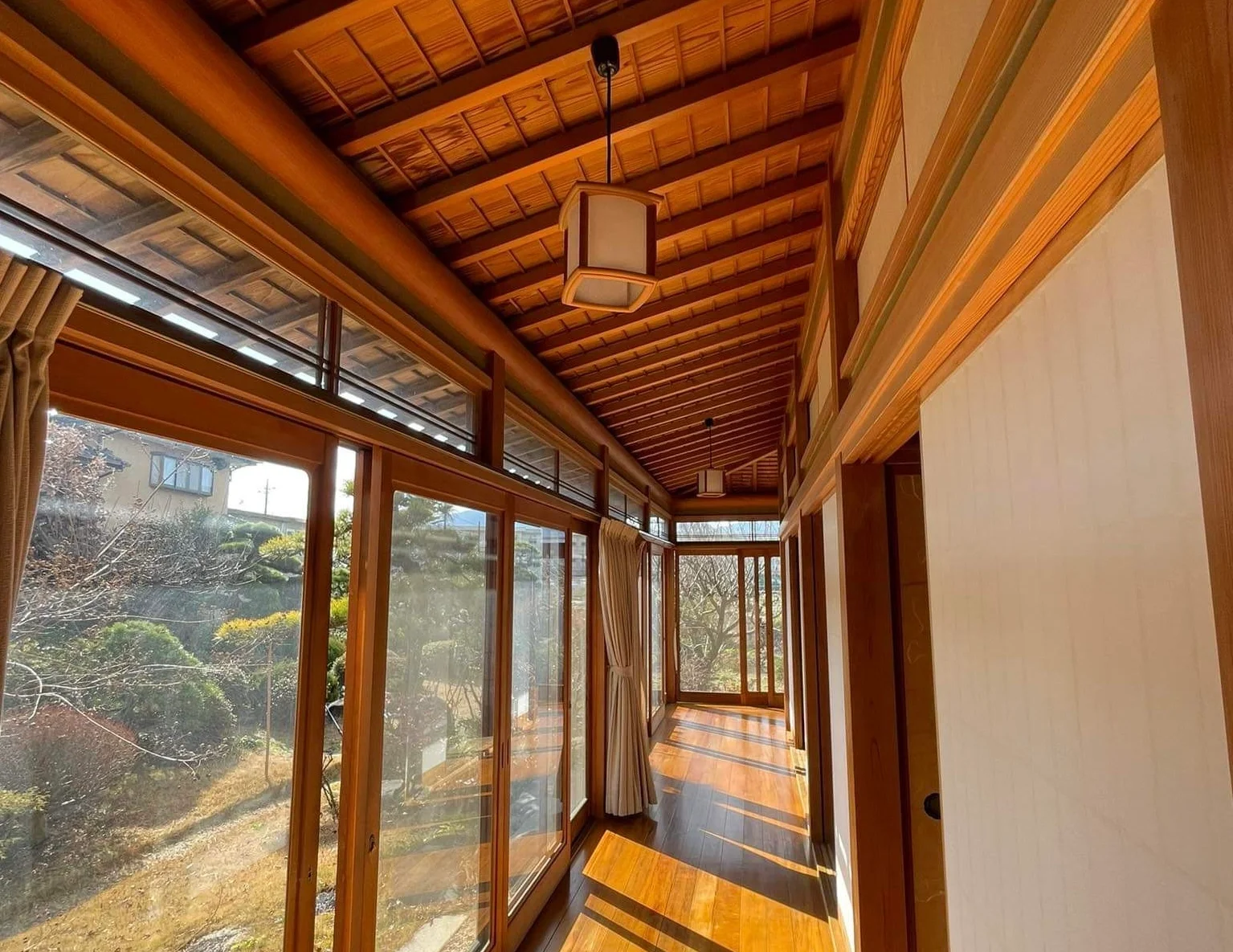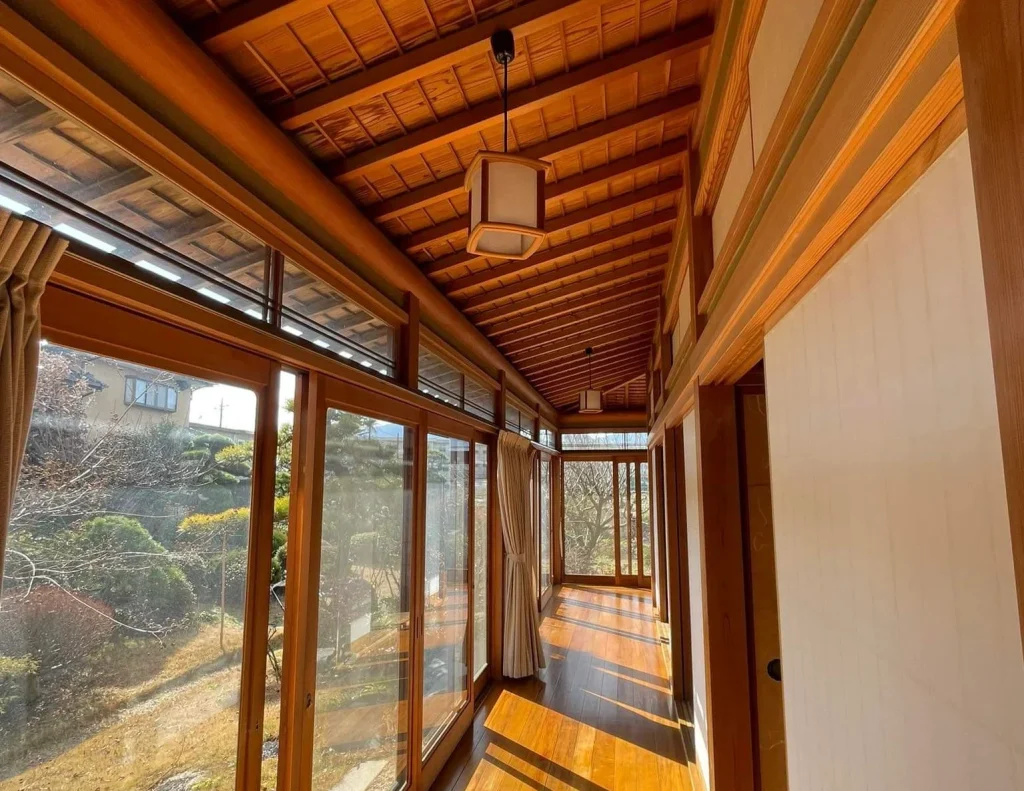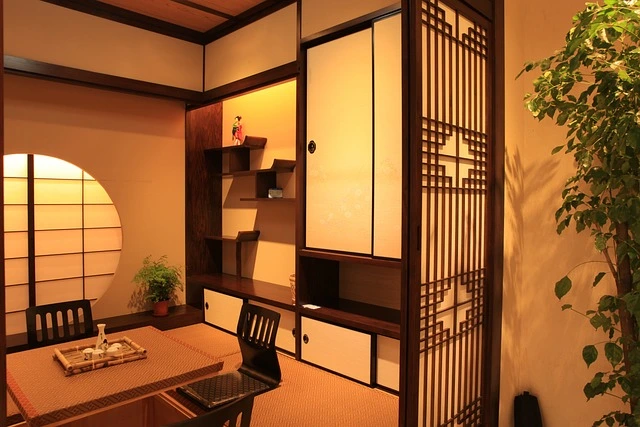
住
2024-04-29
Longing for a traditional Japanese-style house that soothes the soul
No items found.
I have been living abroad in New Zealand for 11 years now. Including the three years I spent in Europe as a child, I have lived abroad for 14 years. Whenever I leave Japan, I inexplicably find myself missing my everyday life there.
My children have also grown up, allowing me to have more free time. I have decided to start a lifestyle of traveling back and forth between New Zealand and Japan since around the end of the pandemic.

I’m not particularly fond of Tokyo. I’ve spent a total of 11 years there, including my university years and early marriage.
The city of Tokyo is sophisticated, brimming with things, and sparkling. (I felt that way when I returned to Japan after 10 years.) And above all, it’s culturally rich.
These aspects are indeed attractive enough. However, I still prefer countryside scenes like those lush, beautiful parks nestled between buildings. And after spending time in a traditional Japanese inn in a hot spring resort for the first time in a while, I felt a sense of calmness, a sigh of relief.
Actually, my relatives live in an apartment right in front of a central station in Tokyo. It’s a convenient and comfortable living environment there. The cityscape is beautiful, and there’s nothing to complain about. My base in Japan is located in the central Tokyo like this.
Concerts, art galleries, restaurants, and various commercial facilities. The opportunity to enjoy the cultural life of the city is also a great attraction for me. However, I felt like this wasn’t my place in Japan. So, I decided to look for a villa not too far from the center of Tokyo.
In the autumn of 2022, when the COVID-19 situation began to settle down, I made a temporary return to Japan for the first time in 10 years. It was around the time when conditional boarding on flights was finally lifted.
Not too far from my home in Tokyo, nor from my family home in Shizuoka Prefecture, I started looking for properties in places where I could easily make day trips.
I was initially imagining about a simple old farmhouse. With food security being a topic of discussion in modern times, I thought that if I were to have a villa in the countryside, even a small one, I would also want a small plot of land for farming.
After researching a lot about old farmhouse restoration and contacting local residents who might have information, my mind was filled with thoughts of old farmhouses.
First, I had to find the right region. A place with good-tasting water was my priority. When I looked into spring water in Kanagawa Prefecture, I came across a place called Hadano City. I thoroughly searched the area around Hadano City, visited multiple times, and ultimately decided on a property in Yamakitamachi, Atsugi, located at the western end of Kanagawa Prefecture.
It had been exactly one year since I started looking for properties. It was my third temporary return to Japan when I finally decided that I wanted a villa.
The initial vision of a modest old farmhouse evolved, and the property I ultimately chose was a spacious Japanese-style residence adorned with a traditional Japanese garden. To be frank, I’ve grappled with the emotional weight of homeownership in the past.
Humans, no matter how spacious it is, why do we work so hard for such a small plot of land and house? I used to think about things like, “Land is just surface level, who does the sky belong to?” When we bought a home in Yokohama City, we ended up leaving Yokohama in less than a year and a half.
Living in rental accommodation after selling our home was very easygoing. Even after coming to New Zealand, we moved seven times within Auckland city in 10 years. Each time, as our daughters’ belongings increased, tidying up and cleaning the house gave us an incredibly refreshing feeling.
It is a funny story that I have decided to buy a house in Japan again, and I have decided to buy a big house, which I should have learned from my previous experience. But why did I decide? It was because the Japanese-style house was so attractive.

I had a vision unlike any I had experienced before. Intuitively, I sensed that this would be a place where people would gather and find joy. While searching for an old private residence, I found myself yearning for a Japanese-style mansion that exuded elegance and charm.
In New Zealand, I crossed paths with a Japanese individual deeply involved in cultural exchange. It was shortly before my temporary return to Japan when I mentioned my quest for a Japanese-style villa and the possibility of hosting guests from abroad there in the future. We discussed the idea, and now we’re one step closer to making it a reality.
This Japanese-style mansion is a place we’d gladly welcome guests from overseas. It exudes a serene atmosphere infused with refined glamour.
It’s evident that this place has been cherished for generations by its previous owners, who were once farmers. While the main building is nearly 30 years old, the adjacent warehouse appears to be much older. There’s even a small silkworm room on the second floor of the warehouse.
As I stood before the Japanese-style mansion, I suddenly realized that, despite being Japanese, I know little about Japanese culture. If a foreigner were to ask me about it, I might not have enough knowledge to respond. Compared to my mother, who taught Japanese tea ceremony and wore kimono herself, I have far less experience with Japanese culture.
The Japanese-style mansion also features a Japanese garden with pine trees and a pond. There are nine pine trees in total. My initial thought was that it might be challenging to care for them. People my age usually don’t like things that are troublesome. Naturally, I don’t know much about Japanese-style gardens. Why are pine trees so common in them, and what makes them attractive? I also have no idea about the value of different types of pine trees.
I’m also unfamiliar with the appeal of ponds and how to maintain them. How is the water circulated and kept clean?
Despite finding the mansion’s architecture lovely, I know little about it. What kind of wood are the long, straight, magnificent wood columns made of, and why were they used here? I believe these woods exist because of the hands and thoughts of various people before they became part of the house. I strongly believe that I want to understand not only the result of their presence but also the intentions behind their creation.
The real one is simple and beautiful.”
This is the catchphrase that I found on the homepage of a shrine carpenter’s construction company yesterday. It is Hana Masu Mokko, located in Isehara City, Kanagawa Prefecture. As I read through the website, I felt a warm feeling. I am sure they are building wonderful buildings.
I remember that this company has been working on Japanese-style buildings such as tea rooms overseas, which caught my attention some years ago. Here is a part of their website.
[A house built with a mind united in spirit] is found to be enveloped in good 気 Ki.
The 気 Ki of a Japanese wooden house has many positive effects on human beings. The ability to recognize the wood is the intuition of a craftsman who has been on the job site for many years. Every day on the site, we are close to the wood, the carpenter’s tools, and the land, and our hearts are connected to the wood and the tools, and we are able to recognize the wood’s quirks and good qualities and bring out the best in the wood.
When I insert my blade into trees that are hundreds of years older than myself on the eternally existing earth, I naturally feel respect and gratitude for “life”. When I sharpen a blade, I feel my spirit unify at the moment the blade and whetstone are perfectly aligned. It is a “sharpened sensation. In other words, beyond the five tangible senses, the unseen part of being a miya carpenter is the real pleasure of being a master carpenter.
The words of a person who has been sincerely devoted to this career are very warm and deep. I believe that the real appeal of Japanese culture is that it values the heart that cannot be seen with the eyes.
I want to know such a heart. If I could feel it, I would. But this kind of feeling is something that can only be obtained through years of earnest and pure devotion to the craft.
I have always admired the spirit of craftsmanship.
I hope to convey the spirit of harmony of these people in my ” Wa no Manabi ” (“Learning of Harmony, Japan”).